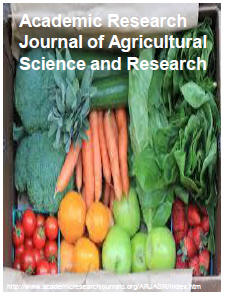| ARJASR |
Academic Research Journal of
Agricultural Science and Research |
||||||||||||||||||||||
|
Academic Research Journal of Agricultural Science and Research Vol. 3(8), pp. 231-237. August, 2015. ISSN: 2360-7874 DOI: 10.14662/ARJASR2015.040
Full Length Research The Performance of Sesame (Sesamum indicum L.) of Genotypes under Agro-Ecological Conditions of Angónia District in Central Mozambique
Matusso, Jossias Mateus Materusse1* and Faruque, Castro1.
1Zambeze University, Faculty of Agrarian Science, Ulóngue-Angónia, Mozambique *Corresponding Author. E-mail: matujossias@gmail.com; +258 825274122
Accepted 10 June 2015
In Mozambique,
Sesame (Sesamum indicum L.) is one of the main cash crops for
small-scale farmers, but its low productivity is one of the greatest
limitations to increasing the income of these families. Therefore, a
field experiment was carried out at N’tengo-Umondzi Research Station
(S14˚32.205' E034˚09.664') in Angónia district in two cropping seasons
with the objective of evaluating the performance of four genotypes of
sesame. The experiment was arranged in a randomized complete block
design (RCBD) with four replications. The treatments were four genotypes
of Sesame, namely Linde, Alua, Rama, and Nicaragua. Results revealed
that the days to 50% flowering and days to beginning of capsules
formation were significantly (p≤0.05) affected by treatments in both
seasons. There were significant differences (p ≤ 0,05) between the
treatments in relation to days to starting seed formations, height of
the 1st capsule and day to beginning of maturity in both seasons. There
were also significant differences (p≤0,05) between the treatments for
varying number of capsules per plant, biomass yield, weight of 1000
seeds and seed yield. In both seasons, the variety Nicaragua observed a
significant higher seed yield with 214,8 kg ha-1 and 241,4 kg ha-1,
respectively. Significant relationships among some agronomic
characteristics of sesame were also reported. The findings of this study
confirm that there is potential for sesame cultivation under
agro-ecological conditions of Angónia, Nicaragua being the variety that
performed better in terms of yields than the other three tested
varieties. How to cite this article: Matusso JMM, Faruque C (2015). The Performance of Sesame (Sesamum indicum L.) of Genotypes under Agro-Ecological Conditions of Angónia District in Central Mozambique. Acad. Res. J. Agri. Sci. Res. 3(8): 231-237.
|
|
|||||||||||||||||||||
